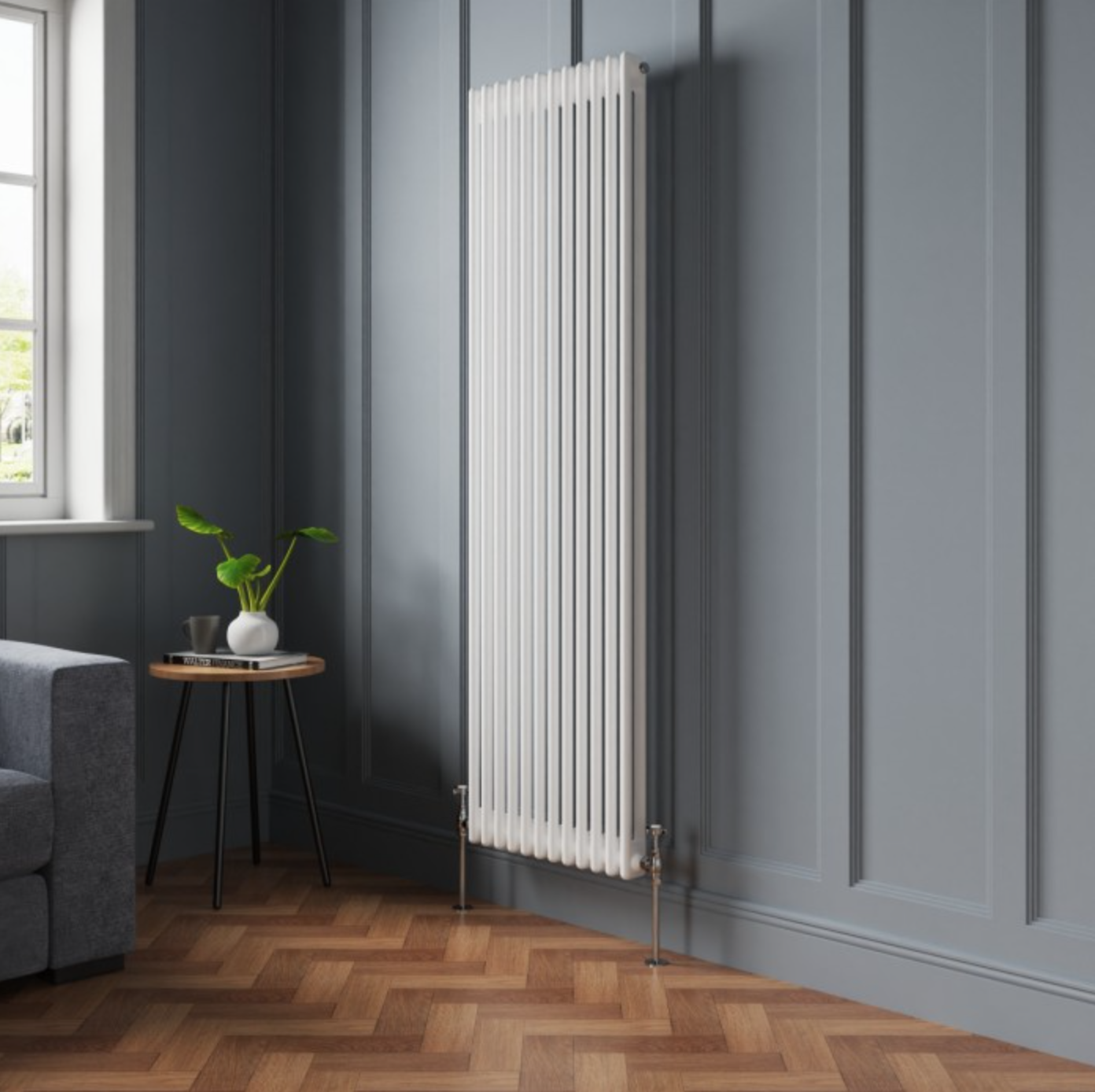Picking the right vertical radiator is all about finding that sweet spot—something that’s not only efficient and effective but also looks great in your space. With so many styles, materials, and heating options out there, it can feel a little overwhelming at first. But don’t worry! This guide is here to help you navigate the choices, step by step, so you can feel confident and make a decision you’ll love for years to come. Plus, did you know a vertical radiator can save energy? Their tall design helps distribute heat more evenly, warming rooms faster and reducing the need to crank up the thermostat. It’s a win for your comfort and your energy bills!
What size do you need?
When it comes to size, vertical radiators offer a wide variety. Whether you’re looking for a compact panel radiator or a large horizontal one, most online retailers have plenty of options. We all know that one size doesn’t fit all in interior design, which is why designer radiators go the extra mile to ensure you find the perfect fit for your home.
Vertical or horizontal?
This choice is both practical and aesthetic. Homes with limited space should consider a vertical radiator to make the most of what they have, while larger homes enjoy more flexibility in their options.
A vertical radiator can make a bold statement, its height drawing attention as you enter any room. In contrast, standard horizontal radiators tend to blend into the wall, but designer versions can add a touch of flair to even the dullest spaces.
Calculate the Heating Capacity for your Room
A radiator can look amazing, but what’s the point if it doesn’t heat your room properly? That’s where BTUs come in—they measure how much warmth your space needs.
For example, if your room needs around 3,000 BTUs, the HeatQuick Spruce Vertical Radiator (435mm x 1800mm) delivers 2,992 BTUs and looks sleek in white—all for under £250.
Need more power? The DQ Peta 3 Column Radiator can pump out over 22,000 BTUs, perfect for large spaces. Yes, it’s pricier at £2,000+, but its stunning copper finish and serious heating power make it worth it.
Bottom line: Match your room’s BTU needs to a radiator that works and looks great. Warmth and style? Sorted.
Where Should I Place a Vertical Radiator?
Vertical radiators are both practical and stylish, making them perfect for rooms where space and design matter. Here’s where they work best:
1. Bathroom
Bathrooms often lack wall space, making vertical radiators ideal. They heat the room quickly and look great, blending seamlessly with your tiles and decor.
2. Kitchen
Kitchens need warmth without clutter. A vertical radiator fits perfectly, adding a design statement while keeping the space cosy for cooking and socialising.
3. Living Room
Make a statement in your living room with a vertical radiator. Their height heats large spaces faster, and their design can complement your decor, turning a necessity into a feature.
Vertical radiators are versatile, stylish, and perfect for any room. Find your spot and enjoy the warmth and flair they bring!
Installing a vertical radiator is straightforward and similar to other radiators, allowing you to connect it directly to your central heating system for optimal performance and aesthetics.
Installation of a vertical radiator
Start by turning off your heating system to ensure safety during the installation. Allow the water in the system to cool down before proceeding.
- Decide on the location for your radiator, ideally near existing pipework and away from doors. Use a digital detector to check for any pipes or electrical cables behind the wall.
- Next, measure and mark the distance between the brackets to determine the centre of the radiator. Drill holes for the brackets based on these measurements.
- Install the brackets securely, ensuring they can support the weight of the radiator before attaching them to the wall, following the manufacturer’s instructions.
- Attach the radiator valves closest to your existing pipework and wrap them in PTFE tape. It’s easier to install the valves before mounting the radiator on the wall.
Tip: Having an extra pair of hands can be beneficial for marking the installation position and during the actual fitting, especially with a vertical radiator.
- Use a spirit level to ensure the radiator is straight, then mark the centre, top, and bottom on the wall.
- Connect the vertical radiator valves to your heating pipework, ensuring everything is tight and secure.
- Open the manual control and bleed valves fully, then open the bleed valve to let water into the radiator.
- Once the radiator stops making noise and is filled, open the lockshield valve by the same number of turns you used to close it earlier.
- Finally, check that all joints and seals are dry and water tight, tightening them if needed.
In selecting a vertical radiator, the process is finding the suitable arrangement between the functional and the aesthetic. Size, capacity, and placement are relevant factors to consider in selecting a radiator that keeps you and your loved ones warm and gorgeous at this moment. There’s a lot to offer in terms of designs, from smaller bathroom models to larger-scale centrepieces for the living area. If installed correctly, you are assured of great heating and a new design feature for the years to come.



